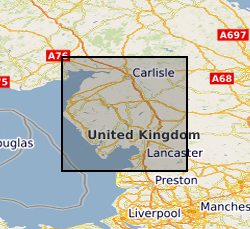Hematite
Type of resources
Available actions
Topics
Keywords
Contact for the resource
Provided by
Years
Formats
Representation types
Update frequencies
Scale
-

The collection comprises photographic half plate black & white negative and 35mm colour transparency copies of plans of mine workings for haematite, gypsum, limestone, baryte and metalliferous minerals for Cumbria dating from 1872 onwards. The plans were originally deposited in compliance with the Coal and Metalliferous Mines Regulation acts. The original plans are currently held by Cumbria County Record Office on behalf of the Health & Safety Executive (HSE) and total about 1240 plans. No digital index is available but a paper catalogue is provided by the Health & Safety Executive. As the collection relates to plans of mines abandoned after the 1872 Act, the holdings are fairly complete after this date. Note however, that the Metalliferous Mines Act originally applied only to mines employing more than 12 men, (eg. some limestone mines). Coal Authority may hold non-coal mine plans not covered by Mine Abandonment Plan collection.
-

This spreadsheet contains 21 oxygen isotope measurements for hematite and mixed hematite/goethite samples from the supergene profiles of the Spence and Cerro Colorado porphyry copper deposits in the Central Andes. Columns are also included which contain calculated isotopic values for weathering fluids which were present at the time of iron oxide formation. These data are presented and discussed in the G-cubed paper 'A rusty record of weathering and groundwater movement in the hyperarid Central Andes' (Shaw et al., 2021). Weathering fluid isotopic values are calculated using the published fractionation factors of Clayton & Epstein (1961), Yapp (1990) and Bao & Koch (1999). The authors have the most confidence in the fluid values obtained using the fractionation factor of Yapp (1990), for reasons outlined in the publication.
 NERC Data Catalogue Service
NERC Data Catalogue Service